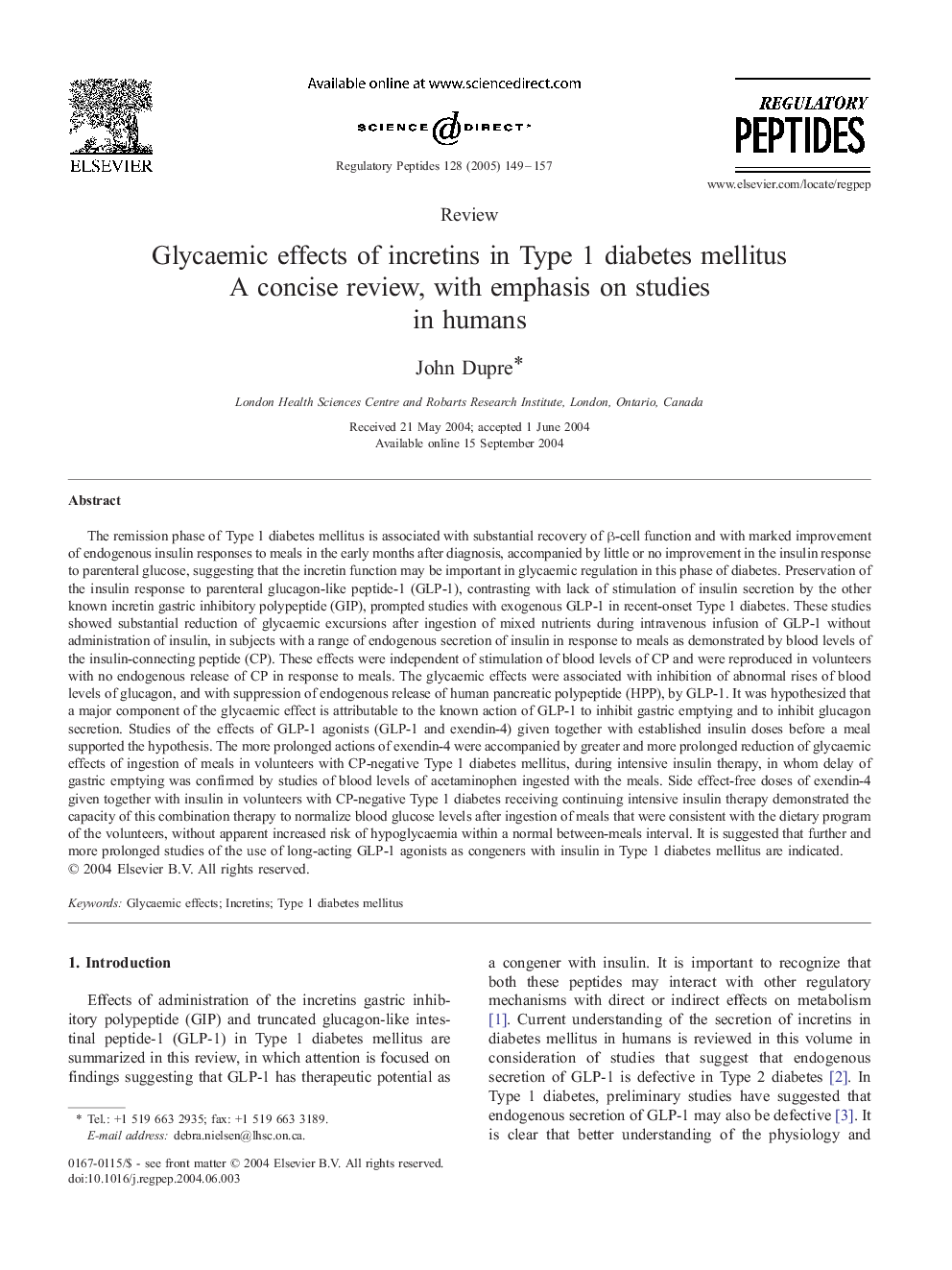| Article ID | Journal | Published Year | Pages | File Type |
|---|---|---|---|---|
| 10845319 | Regulatory Peptides | 2005 | 9 Pages |
Abstract
The remission phase of Type 1 diabetes mellitus is associated with substantial recovery of β-cell function and with marked improvement of endogenous insulin responses to meals in the early months after diagnosis, accompanied by little or no improvement in the insulin response to parenteral glucose, suggesting that the incretin function may be important in glycaemic regulation in this phase of diabetes. Preservation of the insulin response to parenteral glucagon-like peptide-1 (GLP-1), contrasting with lack of stimulation of insulin secretion by the other known incretin gastric inhibitory polypeptide (GIP), prompted studies with exogenous GLP-1 in recent-onset Type 1 diabetes. These studies showed substantial reduction of glycaemic excursions after ingestion of mixed nutrients during intravenous infusion of GLP-1 without administration of insulin, in subjects with a range of endogenous secretion of insulin in response to meals as demonstrated by blood levels of the insulin-connecting peptide (CP). These effects were independent of stimulation of blood levels of CP and were reproduced in volunteers with no endogenous release of CP in response to meals. The glycaemic effects were associated with inhibition of abnormal rises of blood levels of glucagon, and with suppression of endogenous release of human pancreatic polypeptide (HPP), by GLP-1. It was hypothesized that a major component of the glycaemic effect is attributable to the known action of GLP-1 to inhibit gastric emptying and to inhibit glucagon secretion. Studies of the effects of GLP-1 agonists (GLP-1 and exendin-4) given together with established insulin doses before a meal supported the hypothesis. The more prolonged actions of exendin-4 were accompanied by greater and more prolonged reduction of glycaemic effects of ingestion of meals in volunteers with CP-negative Type 1 diabetes mellitus, during intensive insulin therapy, in whom delay of gastric emptying was confirmed by studies of blood levels of acetaminophen ingested with the meals. Side effect-free doses of exendin-4 given together with insulin in volunteers with CP-negative Type 1 diabetes receiving continuing intensive insulin therapy demonstrated the capacity of this combination therapy to normalize blood glucose levels after ingestion of meals that were consistent with the dietary program of the volunteers, without apparent increased risk of hypoglycaemia within a normal between-meals interval. It is suggested that further and more prolonged studies of the use of long-acting GLP-1 agonists as congeners with insulin in Type 1 diabetes mellitus are indicated.
Keywords
Related Topics
Life Sciences
Biochemistry, Genetics and Molecular Biology
Biochemistry
Authors
John Dupre,
